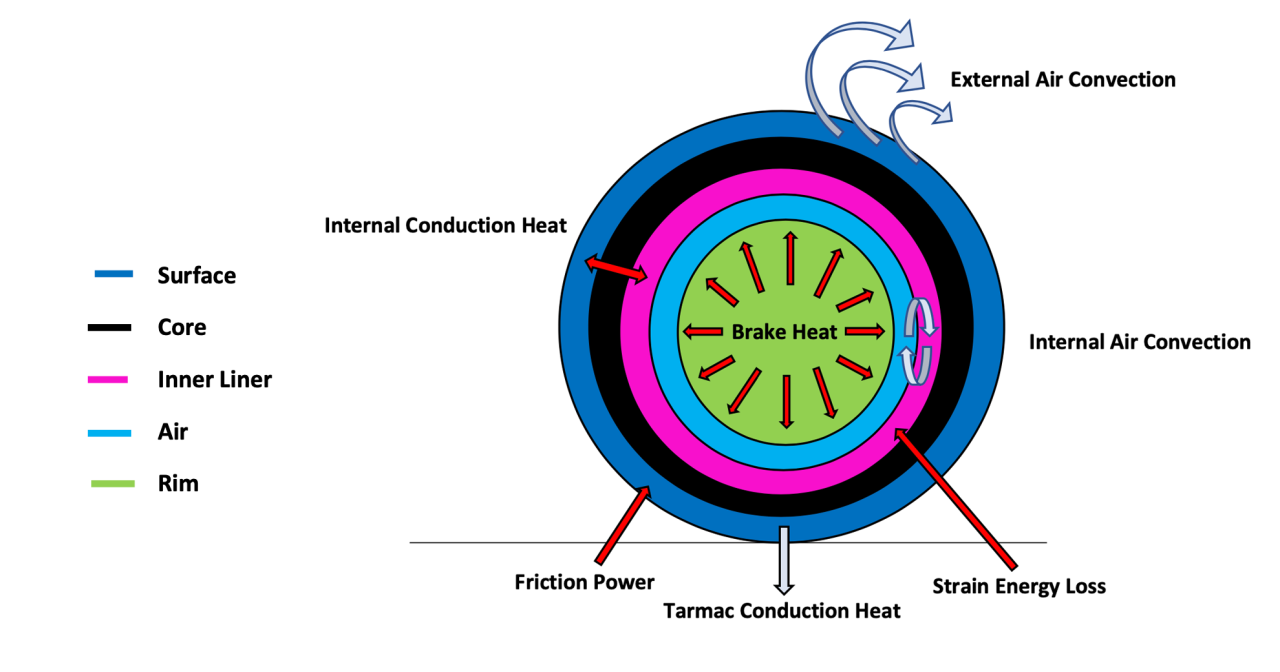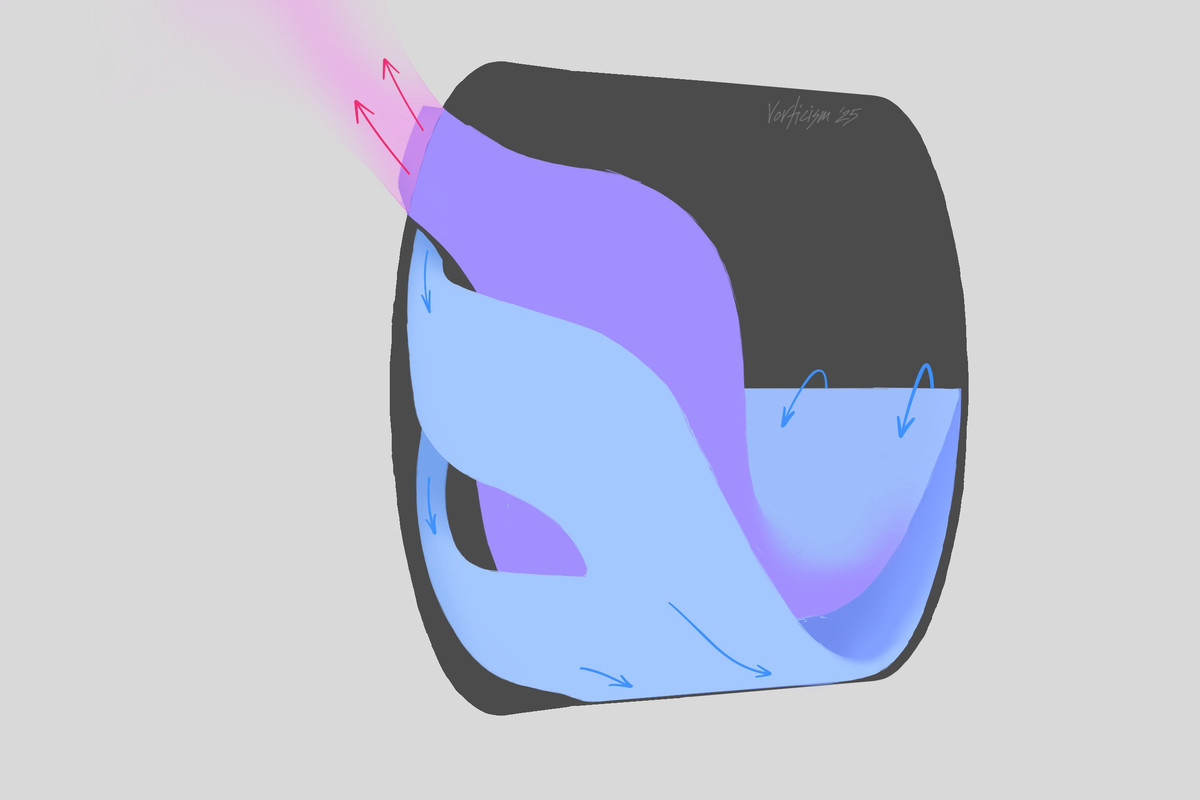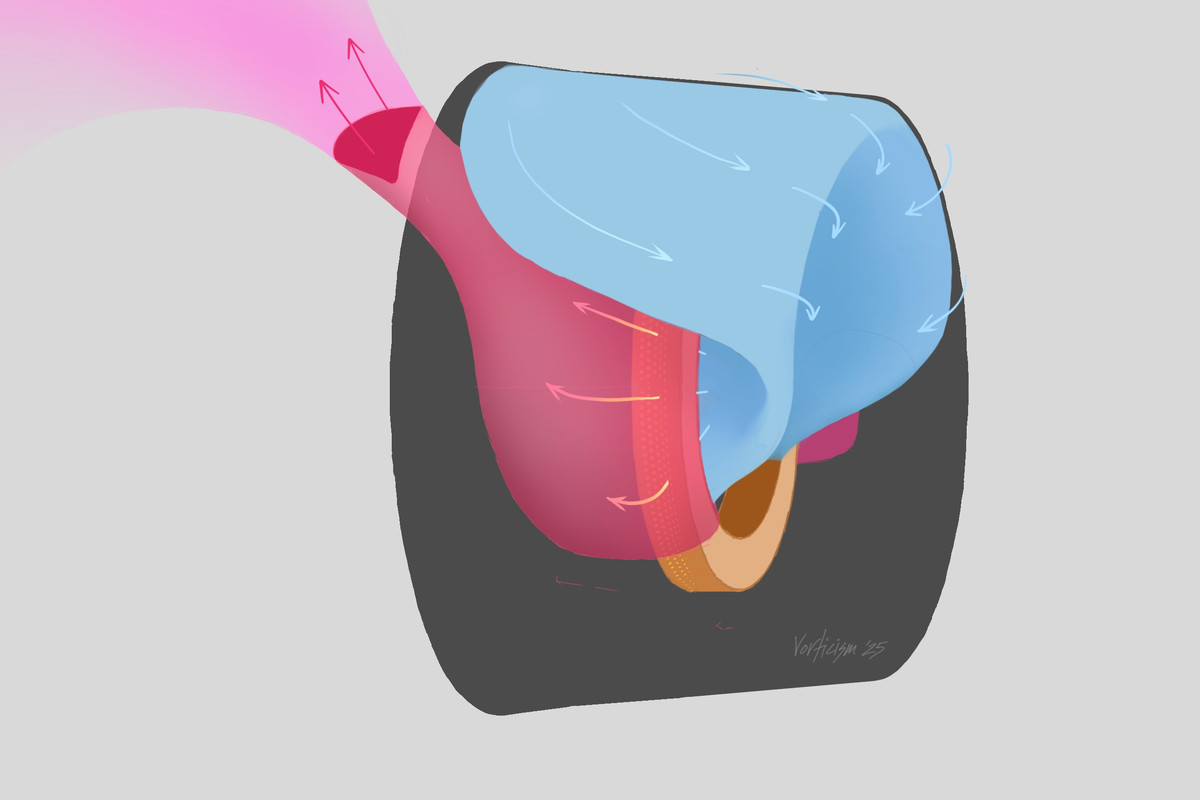dialtone wrote: ↑02 Jun 2025, 19:26
AR3-GP wrote:I wonder if more attention can be paid to how the heat radiates outward from the back of the car. There are many external heat sources including the engine, the cooling system, the exhaust pipes, the front brake duct exits and the rear brake ducts exits. How do they conduct and convect heat towards the back of the rear tires? If you take a thermal snapshot, what is the temperature of the air entering the rear brake ducts, the air hitting the face of the tire, and the temperature of the air near the inner sidewall?
Without forced air or a heat exchanger to increase surface there’s no way you can heat a tire with so little contact time just by airflow escaping to the back of the car.
The tire is always in contact with the airflow. The brake duct exits, the exhaust pipes, and other hot components are constant heat sources. They warm the air at speed because heat flows from hot to cold. For the same reason, there is a tire cooling effect when air hits the tire as long as that air temperature is below the temperature of the tire. Without this, the tire would just get hotter and hotter until it melted because there would be no mechanism for heat added from friction at the contact patch, deformation of the sidewall, and the brakes/rim to leave the rubber.
That means the temperature of the air surrounding the tire is important. It establishes the thermal gradient which extracts heat from the tire. The greater the temperature difference, the greater the heat transfer. In other words, if you send warmer air to the tires, the tires cool less. This can happen on a hot day when the air temperature is high, or if for some reason you aim all of your hot air exits at the tires. So that's why I commented on the brake duct and the air curtain effect. If you aim a hot air gun at the sidewall (i.e a brake disc collector outlet), then the sidewall will be heated by some amount. It's a constant heat source like putting a hair dryer in your face. We're talking about incremental gains here, not silver bullets. An optimization of the hot air outlets may lead to incremental gains in the cooling of the tires. Optimization of aero balance may lead to less slip/heat. Improvement of the brake tins may lead to more cooling from the inside.

It doesn't turn.












